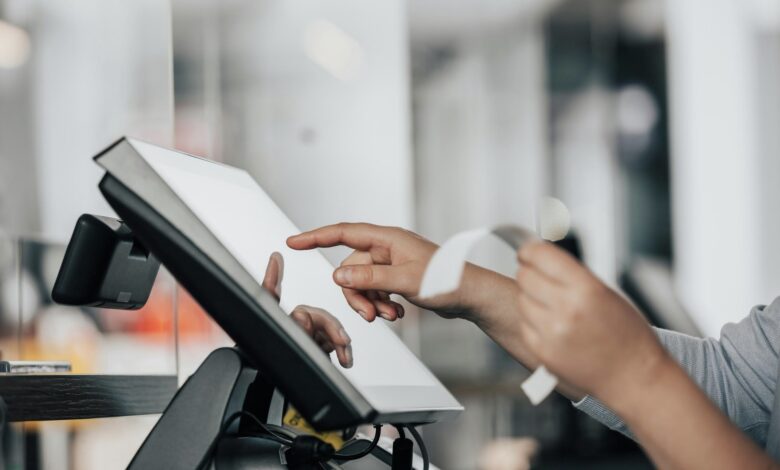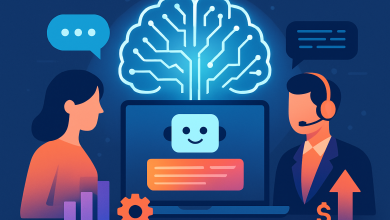
Every operator knows the feeling: it’s 12:15 pm, the lunch queue is out the door, and the next ten minutes will decide whether guests leave delighted or disgruntled. At that moment, frontline staff don’t need another dashboard. They need the single fact that keeps service humming — “we’re eight buns away from a stock-out” or “nacho cheese sales are spiking; start the second warmer.”
AI at the point of sale is built for exactly this pressure. By reading live transaction streams, a modern POS can flag slow-moving items, predict low inventory on best-sellers, and prompt prep tasks before the kitchen feels the pinch. It is real-time triage, not retroactive reporting. The payoff is tangible: fewer stockouts, tighter waste control, and staff who focus on guests instead of relying on guesswork. In a sector where leading chains are already deploying AI assistants to manage scheduling and inventory — Yum China rolled out its Q-smart tool this month — those real-time insights are quickly becoming table stakes.
Another hidden advantage is cross-shift memory: the algorithm “remembers” what the breakfast crew flagged at 9:00 am and nudges the dinner team if the issue persists. Historically, those hands-off lived on sticky notes or vanished in the rush. Now the system captures them as data points, so a temperature spike in the soft-serve machine triggers a mid-day cleaning ticket and an automatic parts check before the night shift.
The same loop works on the sales side; when the POS detects an unexpected surge in demand for plant-based menu items, it alerts purchasing to adjust tomorrow’s delivery instead of forcing a late-night trip to the wholesaler.
By converting isolated observations into shared intelligence, AI keeps every shift rowing in the same direction while tightening food-safety compliance without another cupboard or certification course.
A quiet shield for the front line
Efficiency is only half the story. Retail theft and customer aggression continue to rise, with US shoplifting incidents increasing by up to 93 percent since 2019. When I stocked shelves as a teenager, the threat was something we felt long before any report captured it. Today’s AI-equipped POS turns that instinct into a safety net.
A discreet panic button is built right into the checkout flow. With a single tap, staff can alert managers — or, if necessary, law enforcement — while AI-linked cameras automatically attach video to the exact transaction. Those twin safeguards speed assistance and preserve clear evidence of what occurred. Panic buttons themselves aren’t new, but integrating them with POS data and real-time video means teams no longer have to juggle separate systems when seconds matter most.
Fraud signals in milliseconds, not months
Shrink isn’t limited to shoplifters. Refund scams, midnight “no-sale” drawer pops, and friendly fraud can drain margins and morale alike. AI excels at spotting these anomalies because it never tires and never averages things away.
Our platform tags unusual void patterns, after-hours drawer accesses, or mathematically impossible discounts the moment they appear, then pairs each flag with the relevant camera angle. That immediacy protects revenue, but it also protects reputations; an associate isn’t left defending honest mistakes with only their word. Transparency keeps good people on the team.
Technology that lifts, not replaces
Small and mid-sized businesses often fear that smarter software is a prelude to smaller headcounts. That is not the future we are building. AI should shoulder the repetitive, data-heavy tasks — trend analysis, fraud detection, and dynamic pricing suggestions — so humans can bring the nuance: a smile, a judgment call, or the instinct to comp a meal when a birthday balloon pops.
Industry surveys already show nearly a third of full-service operators using AI to tune prices by daypart or demand curve. Yet the final “yes” still belongs to the manager who understands her neighborhood. Augmentation, not automation, is what keeps workplaces human.
The next leap: Store-specific learning
Generic benchmarks are yesterday’s edge. The coming wave of POS intelligence will learn a store’s personal heartbeat — its lull at 2:30 p.m., its Friday-night ace cashier, the freezer that
drifts warm every other week. By listening to those micro-patterns, AI can propose staffing tweaks, maintenance windows, or reorder points unique to that location.
We’re already training models on thousands of anonymized merchant-hours so the system can say, “Your chicken tenders run low 18 minutes earlier on wet days; thaw an extra tray at 10:45.” Multiply that across a chain and you turn gut feel into coded know-how, freeing workers from fire-drill mode and lowering stress levels shift after shift. Market analysts predict that the AI-in-QSR segment will grow at a 29 percent CAGR through 2030 — evidence that this personalization is not theoretical, but rather a commercial momentum.
A safer, smarter counter starts now
Frontline teams deserve more than platitudes about digital transformation. They deserve tools that keep queues moving, keep margins intact, and keep them safe enough to come back tomorrow. By weaving AI directly into the checkout moment — where inventory, payments, video, and human interaction intersect — we turn the POS from a cash drawer into a control tower.
The result is a workplace where people spend less time firefighting and more time hospitality-making, backed by a system that never blinks and never forgets. That is human-AI collaboration at its best, and it’s arriving not in some distant future, but one busy lunch rush at a time.





